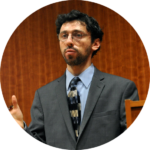
First Jewish presence: 1903; peak Jewish population: unknown; Jewish population in 1933: unknown
Suedlohn’s first Jewish family settled there in 1803, after which a Jewish community grew rapidly. During the years 1856 to 1880, Suedlohn, which is part of the nearby town of Stadtlohn, belonged to the regional Jewish congregation of Ahaus. The community regained its independent status in 1880. From 1856 onwards, local Jews maintained their own synagogue. The building—records suggest that it was used as a barn before 1856—was located in a narrow alley between the marketplace and the town’s north wall. The modest synagogue consisted of one room only, with a small staircase leading to the women’s gallery. The synagogue’s interior was destroyed on the night of November 10, 1938; tables, chairs, ritual objects, books and documents were set on fire in the marketplace. The severely damaged synagogue building was demolished soon after the pogrom. At the Jewish cemetery—the site was desecrated during the pogrom—gravestones were plundered in 1942. Twenty-five Suedlohn Jews perished during the Shoah.Ruth Martina Trucks
Copyright: Pogrom Night 1938 - A Memorial to the Destroyed Synagogues of Germany/ Germansynagogues.com
Notes
sources: Feuer in dein Heiligtum gelegt: Zerstörte Synagogen 1938 Nordrhein-Westfalen, Michael Brooke [Ed.], Meier Schwarz [foreword], [publisher] Kamp, 1999., Synagogen Internet Archiv, www.synagogen.info , Yad Vashem’s Central Database of Shoah Victims’ Names, www.yadvashem.org/wps/portal/IY_HON_Entrance
Details
| Date Added | Mar 25, 2020 |
|---|---|
| Category | Residential |
| Country | DE |
| State | North Rhine-Westphalia |
| City | Suedlohn (Südlohn) |
| Exhibits | Pogrom Night 1938 - A Memorial to the Destroyed Synagogues of Germany |
Have additional information, photos, connections, or other resources to contribute?
Help Us in the race against time to time document Jewish history!






